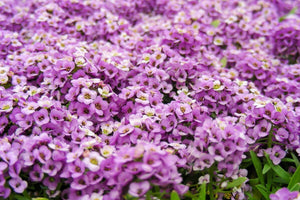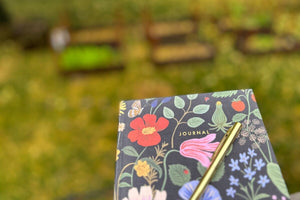What is Kohlrabi? A Guide to Growing and Eating This Unique Vegetable
KohlrabiKohlrabi is a unique-looking vegetable that is showing up often at farmer's markets and gaining popularity. This often-overlooked vegetable is a member of the cabbage family and has a unique taste and texture. The bulb of the kohlrabi is the most commonly consumed part, and it can be eaten raw or cooked. It has a crisp, juicy texture and a mild flavor. Kohlrabi leaves are also edible and can be used like other leafy greens. In this guide, you'll learn all about kohlrabi, including how to grow it in your own garden.

What is Kohlrabi?
Kohlrabi isn’t considered a traditional vegetable in the United States since it’s only been grown here since 1800. But kohlrabi is a staple in Northern and Eastern Europe, specifically in German-speaking countries.
The name of this unique vegetable comes from Germany and means cabbage turnip. When you look at it, the name makes sense. It looks like a turnip but grows above ground and has leaves almost like a cabbage. Kohlrabi is also called a German turnip.
It’s hard to describe the taste and texture of kohlrabi, but it’s similar to cabbage or turnip but more mild. The taste is also similar to broccoli stems. The texture can be compared to an apple or water chestnut. It is crunchy and slightly juicy.
Kohlrabi comes in green and purple varieties. They are sometimes referred to as red and white.
Kohlrabi is a cool-weather vegetable and a member of the Brassica family. Although it’s a biennial, it is harvested in the first year because it will flower and produce seeds in the second year.
How to grow kohlrabi from seed
Kohlrabi is easily started from seed. It can be directly sown outside or started indoors. The secret to successful kohlrabi growing is to be aware of the temperatures. Kohlrabi is a cool-weather vegetable and thrives in the right environment.

Tips for starting kohlrabi seeds outdoors
Kohlrabi seeds can be directly sown as soon as the soil can be worked. When outside temperatures are above 45ºF, sow the seeds ¼ deep and space 6 to 8 inches apart.
For a fall or early winter harvest, you can plant kohlrabi 8 weeks before the first fall frost.
Kohlrabi seedlings are not frost tolerant and will need to be protected on cold nights. But once the plant is more mature, it can tolerate a light frost. When growing kohlrabi in a fall garden, a light frost will result in a sweeter flavor.
In some locations, kohlrabi can be grown through the winter months.
Tips for starting kohlrabi seed indoors
Kohlrabi seeds can be started indoors 6 to 8 weeks before the last spring frost. This can be a helpful method when you have a short spring season.
Plant kohlrabi seeds indoors at room temperature - 60º to 70ºF. There is no need for a heating mat. Keep the soil moist until the seeds sprout. A humidity dome will help keep moisture in. Seeds should germinate in 12 to 15 days.
Place a grow light close to the plants to prevent leggy seedlings. Water seedlings from the bottom to avoid damping off.
Transplanting kohlrabi seedlings
When plants have 4 or more true leaves, start hardening off your kohlrabi seedlings for transplanting.
Space seedlings 6-8” apart in the garden. Take care to avoid disturbing the root as much as possible.
Kohlrabi seedlings are more vulnerable to pests, wind, frost, and drought. The use of row covers can protect vulnerable plants until they are larger.
When transplanting kohlrabi, only cover the top of the roots with soil. Above the ground is where the bulb will develop on the stem.

How to grow tasty kohlrabi
Kohlrabi needs to grow in a sunny location with rich soil that drains well. To keep your kohlrabi crisp and tasty, keep them regularly fed and watered.
A location with full sun is best for growing kohlrabi. It can tolerate some shade but needs a minimum of 6 hours of sunlight a day.
Temperature is critical in growing kohlrabi. It will bolt, get woody, and turn bitter when it gets too hot. High temperatures will result in rapid growth because the plant will be bolting or going to seed. This rapid growth will cause weak plants and can keep them from developing a bulb.
Any drought or hot temperatures will stress the plant and affect its texture and flavor. Keeping the soil moist but not waterlogged is critical. Use mulch to conserve moisture. This an excellent place to add those grass clippings and other organic mulches. Soaker and drip hoses can help keep the soil consistently moist.
Kohlrabi grows quickly and needs additional fertilizer. You can apply a nitrogen-rich fertilizer 3 weeks after transplanting. This will give nutrients for healthy growth. The kohlrabi bulbs will form above the soil on the stems.
Kohlrabi grows quickly and is perfect for interplanting in the spring. It will be ready to harvest before other vegetables get big enough to shade out the kohlrabi. You can also succession plant every 2 or 3 weeks to stagger your kohlrabi harvest.
Solutions for kohlrabi pests and diseases
Kohlrabi has the same pests and diseases as cabbage and broccoli.
To treat kohlrabi plants infected with cabbageworm, cabbage looper, or diamondback moth larvae, you can apply bacillus thuringiensis. Also called Bt.
Flea beetles leave tiny holes in the leaves. These shouldn’t damage the kohlrabi bulb.
Clubroot disease can be mitigated by adding lime to acidic soil and rotating crops. Avoid growing kohlrabi in the same spot as other brassicas for a few years.
Harvesting kohlrabi
Harvesting kohlrabi is very easy to do. The most important thing is to harvest kohlrabi before it gets tough and woody. Usually, when kohlrabi bulbs are golfball to tennis ball sized, they are big enough to harvest. The leaves should still be young and tender. Older plants can be bitter.
To harvest the kohlrabi bulbs, pull them up a little and cut off the roots at ground level. Use a sharp knife or sturdy kitchen shears.
Remove the leaves before storing them. Use the leaves within 3 days. The bulbs can be stored in a loose or perforated plastic bag for up to 30 days in the fridge.
Tips for Eating Kohlrabi
Once you have successfully grown your kohlrabi, it's time to enjoy eating it! Here are some tips to help you make the most of this unique vegetable:
Raw Kohlrabi
Eating kohlrabi raw is the easiest way to enjoy the healthy benefits. Kohlrabi has a crisp, refreshing texture that makes it perfect for salads and slaws. Slice it thinly or julienne the kohlrabi and toss it with your favorite greens, dressings, and toppings for a delicious and nutritious salad or slaw.
Boiled Kohlrabi
Boiling kohlrabi is a simple and healthy way to cook it to eat plain or add to other dishes. Cut the kohlrabi into small pieces and boil them until they are tender. You can then season them with salt, pepper, and herbs for a tasty side dish.
Creamy German Kohlrabi
The traditional German way to serve kohlrabi is in a cream sauce. This sauce is often flavored with nutmeg or parsley. The sliced kohlrabi can be cooked until tender and then added to the cream sauce.
Hungarian Stuffed Kohlrabi
In Hungary, kohlrabi is the star of the meal when it is stuffed with rice and meat. There are many recipes to try with different meats and seasonings.
Kohlrabi Fritters
Use shredded kohlrabi to make fritters. Peel the tough outer layer first and then shred and drain the kohlrabi. Add egg, flour, and salt, and fry them up for a delicious treat.
Kohlrabi Soup
Kohlrabi can be added as an extra vegetable to any kind of soup or stew. It can also be the main flavor and cooked in a vegetable broth. After it’s soft enough, use an immersion blender to make it smooth for a thick, creamy soup.
With these tips, you can explore the versatility of kohlrabi and discover new ways to incorporate it into your cooking. Feel free to get creative and experiment with different flavors and cooking techniques to make the most of this underrated vegetable.
Health Benefits of Kohlrabi
In addition to its unique flavor and versatility in cooking, kohlrabi also offers several health benefits. It’s a good source of fiber, which can aid in digestion and promote a healthy gut. Kohlrabi is also rich in vitamins C and B6, which are important for immune function and brain health. Additionally, it contains minerals like potassium and manganese, which are essential for maintaining proper bodily functions. Including kohlrabi in your diet can contribute to a well-rounded and nutritious eating plan.
FAQs about kohlrabi
Why is my kohlrabi woody/bitter?
Kohlrabi needs consistent moisture and low heat to grow stress-free. Stress from heat and drought will create a bitter harvest.
Can I grow kohlrabi in pots?
Kohlrabi can be grown in pots, but it takes a little more attention. The container needs to be deep enough, at least 12”. The soil must also stay moist and have enough nutrients available for the growing season.
Why isn’t my kohlrabi forming a bulb?
Make sure your plants have enough space to grow. If temperatures are too hot, kohlrabi will skip the bulb-forming stage and move into the seed-producing phase. This is also called bolting. Also, ensure your kohlrabi plants get enough water and nutrients to form a bulb.
Are kohlrabi leaves edible?
Kohlrabi leaves are edible and can be used in the same way as collards and kale. You can snip off some of the leaves while the bulb is still growing for more tender leaves. When you harvest the kohlrabi bulb, remove the leaves before storing them.
Kohlrabi is a healthy, delicious, and unique vegetable that you can have fun growing in your garden. So why not try this underrated vegetable and discover its delightful flavor for yourself? Now that you know how to grow and eat it, it’s time to add this unique and delicious vegetable to your garden.
Found this blog helpful? Share it with your gardening friends!







Leave a comment